Welcome to Paulina Kitchen and a dessert that is so delicious and special that we can consider as a gift from life. If they already know it, it will be obvious that it is because we think: edge, butter, syrup, nuts ... who would not be delighted to receive such a gift? In this post we tell you everything.
The Baklava is a dessert much appreciated in the Turkish culture and is served on numerous special occasions, such as religious festivities and weddings. But in addition, as we already anticipate, Baklava is a popular gift in Türkiye and is usually shared with family and friends.
Content table
About Backlava's recipe
Baklava is very popular worldwide and can be found in many different cultures and kitchens . It has become an iconic dessert in Arab, Turkish, Greek and Balkan cuisine. This caused there to be versions of other origins such as Baklava de Bosnia . All rich friends! Try everything.
What is its origin?
The Baklava has a disputed origin , and it is believed that it has evolved over several centuries in different cultures. While there is no absolute consensus, it is believed that its origin dates back to the old Mesopotamia (today, part of Iraq) more than 4,000 years ago.
From there, he expanded and became popular in Ottoman cuisine and throughout the Middle East region and the Balkans. The Baklava became a coveted delight and its reputation spread through commercial routes, leading its popularity to other parts of the world.
What is Baklava?
The Baklava is a sweet and rich dessert that consists of layers of edge dough (a fine and translucent dough) stuffed with crushed nuts, such as nuts, almonds or pistachios. The edge mass is very fine and dry, and it is obtained by stretching the dough until it becomes transparent. Several layers are used for this typical Turkish dessert.
These layers of phyllo dough are impregnated with melted butter. Traditionally, Baklava bakes until the dough is golden and crispy. Then a sweet syrup made of sugar, water and hot lemon is poured on the hot dessert.
Baklava can be cut in different forms, such as triangles, rhombuses or squares. It is commonly served in special celebrations, such as weddings, religious parties and festivals. It can also be found in bakeries and stores of specialized sweets.
Regional varieties of this Turkish sweet
Over the years, Baklava has evolved and different regional varieties have been developed. For example, in Türkiye, honey syrup and syrup are usually used. In Greece, a mixture of walnuts and cinnamon is used, and is served sprinkled with powdered and cinnamon sugar. Each region has its own unique version of Baklava.
Such an emblematic dessert that is part of culture
The Baklava is mentioned in ancient culinary and literary texts. For example, the Persian poet of the twelfth century, Nezamí, mentions Baklava in one of his poems. The Baklava has appeared in various films and television series that represent the culture of the Middle East and the Balkans. It is often shown as a tempting and exquisite delicacy.
How long does Baklava last?
It depends on how it is stored. In general, it remains fresh and tasty for several days at room temperature if stored in a hermetic container. However, to preserve its freshness and quality for longer, it is recommended to refrigerate it. In the refrigerator, Baklava can last up to two weeks.
To store it for a longer period, the Baklava can freeze . Wrap in aluminum foil or place in hermetic containers suitable for freezer. In this way it will remain well for approximately three months. To consume it, get out of the freezer and let it defrost at room temperature before enjoying it.
It is important to keep in mind that the freshness and quality of Baklava can vary depending on the ingredients used and storage conditions, so it is always better to consume it within the recommended periods of time.
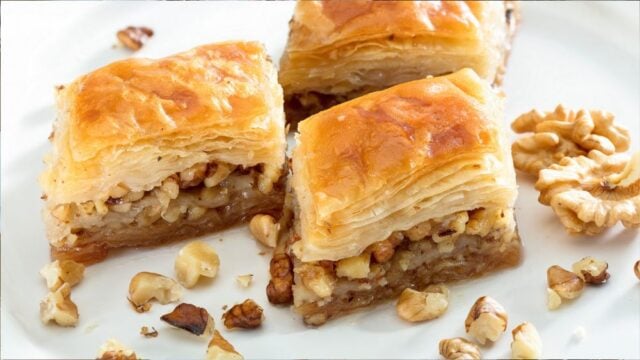
A typical Turkish dessert difficult to do but increasingly accessible
During the Ottoman Empire, Baklava became a delicacy associated with royalty. The elaboration of Baklava was considered a valuable culinary skill and the chefs of the Imperial Palace prepared it with great care.
Although it is traditionally done by hand, today it can also be found in commercial versions and packaged in many supermarkets. This has allowed Baklava to be more accessible to those who do not have the capacity or time to do it from scratch.
The edge dough
Filo mass preparation requires skill and experience . The pastry teachers who specialize in making this typical Turkish dessert are experts in stretching the dough until it is the thinnest as possible, often achieving a thickness of less than one millimeter. But here also comes modernity to make us more accessible access to traditional gastronomy, since it is very common to get the edge dough in pantries or supermarkets.
Baklava preparation requires skill and patience. The edge must stretch until it is thin enough to be transparent, and then layers of dough in a mold are placed, alternating with the filling of crushed nuts. Time and dedication are worthwhile in this incredibly delicious recipe.
Last details
Data: The day I made this recipe was to see the Argentine-Bosnia . As I am very canchera and good vibes, I decided to take a traditional Bosnian recipe to the friends of friends. Symbolically, we eat the opponent. Very ingenious, Paulina. The idea, sincerity, seems pedorra.
But it turns out that on the way I found this wonderful recipe, a Baklava from the other Baklavas (which are made with edge mass), originally from the Banjukka region. The dough is very humid and sweet and the combination with the very cold cream makes a wonderful dessert. It is also relatively easy to make and does not carry rare ingredients.
Plus, they have been asking for recipes with almond flour , here is one.
The recipe lent me this lady , and I have made some several modifications.
Enjoy it, you will love.
Baklava recipe
Ingredients
- 8 tbsp. of ground sweet cookie
- 8 tbsp. of ground almonds (or almond flour)
- 2 tbsp. of maicena
- 2 tbsp. of lift flour
- 16 tbsp. milk
- 8 tbsp. of oil
- 3 eggs
- 2 tbsp. of chopped almonds

For the syrup
- 1 glass of sugar
- 1/2 glass of water
- Mid Limón Rallastura and Juice
To serve
- Whipped milk (mounted) with sugar
How to do Baklava
(It takes time but it is worth it)
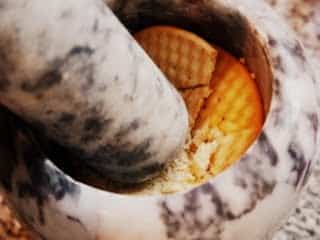

1. Grind the cookies in mortar or with the crusher. I did it in mortar and it becomes very fast.
2. Mix the ground cookies with almond flour (ground almonds).
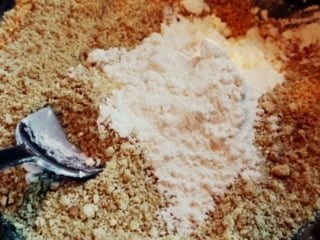
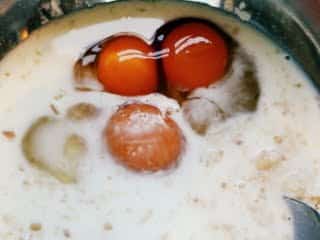
3. Incorporate cornstarch and lift and unite flour
4. Add eggs , milk and oil . Mix everything until a homogeneous mass is left.
[Tweet "Baklava: Traditional recipe prepared in the Bosnia way"]
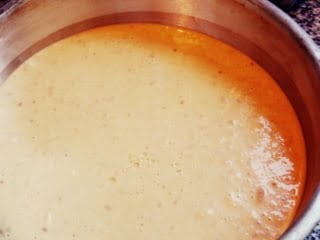
5. Take half an hour oven Then lower the heat about 15 minutes.
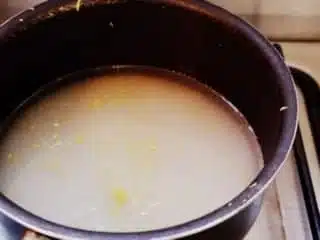
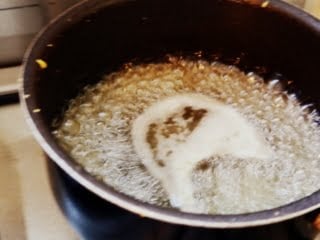
How to make the syrup
- Place the sugar, water and lemon zest in a pot. Put over medium heat and boil about 10 minutes. Remove the foam that appears above and stir from time to time. When the 10 minutes have passed, add the lemon juice and let boil about 5 more minutes. Cool.
- Remove the cake from the oven and cut into rhombuses (this is called Baklava).
- Bathe with the syrup, which must be cold . Let cool.
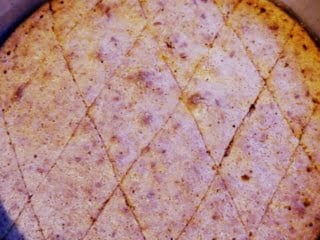
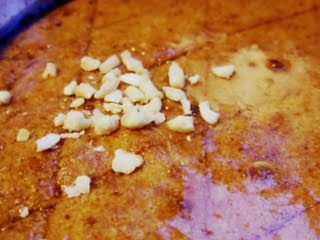
Once the cake has absorbed the syrup, water the surface with almonds .
Plated: It eats very cold and with cream with sugar.
This is how my baklava was incredibly rich
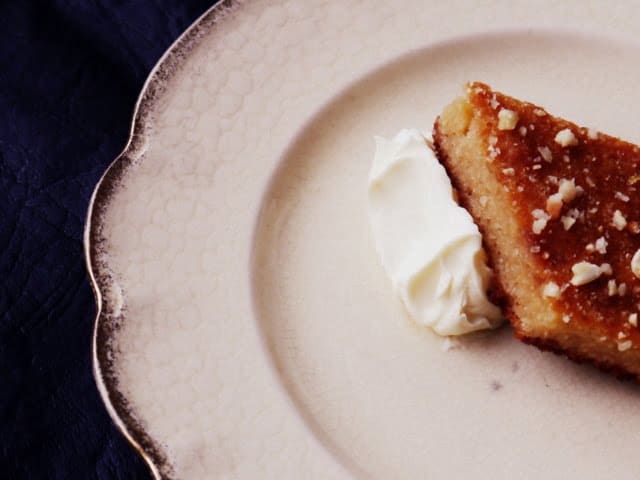
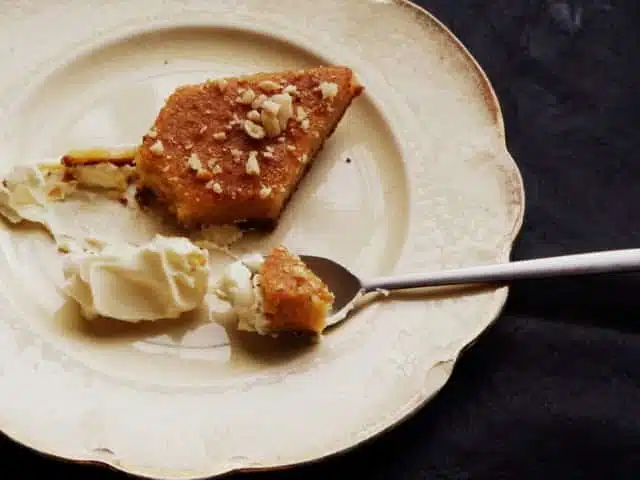

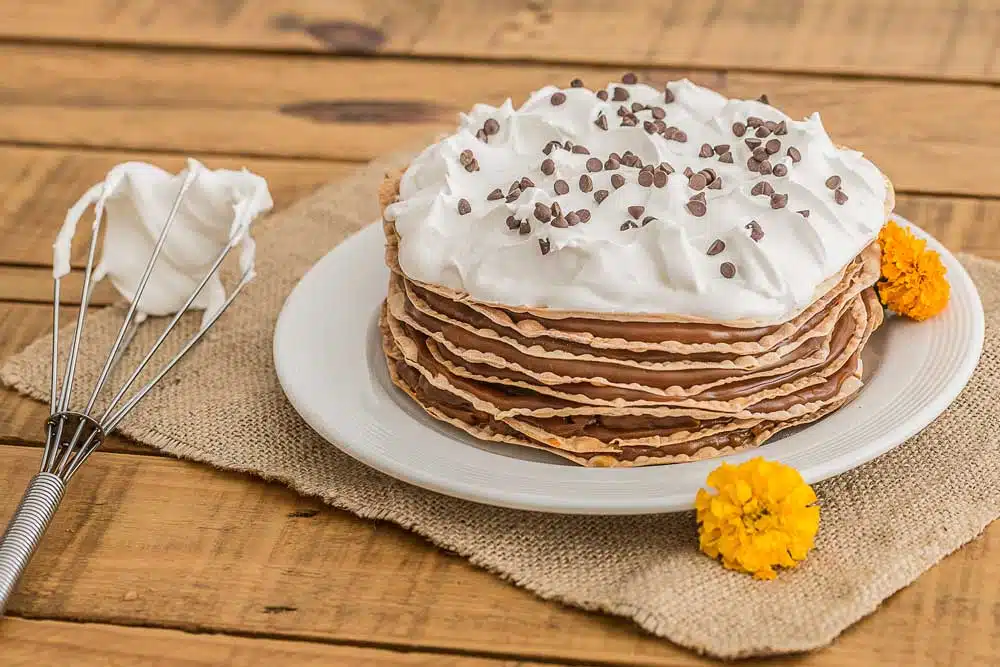
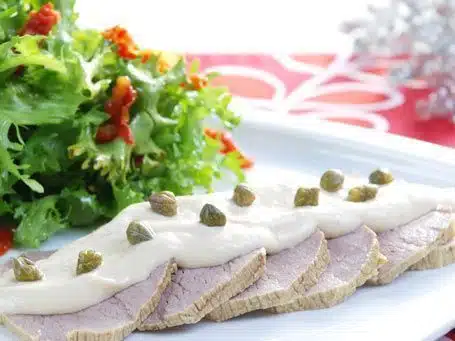


Hello, I encourage me to make this recipe for Christmas, I hope that Ami Familia like, add some cherries to the marrasquino inside the dough, then I tell you
All good, but the recipe shouldn't start with the syrup, so that it is cold when we take the oven cake?
My aunt Palmira did something very similar in appearance, with half a dozen eggs, 200g of butter (butter) and half a kilo of semolina. I baked it, cut it into rhombuses and bathed it with syrup. It is a recipe of Greek origin.
The Eastern Baklava is very different, I think it is of Greek origin, at home we have done it many times because it also belongs to Arabic cuisine… ..Pablo